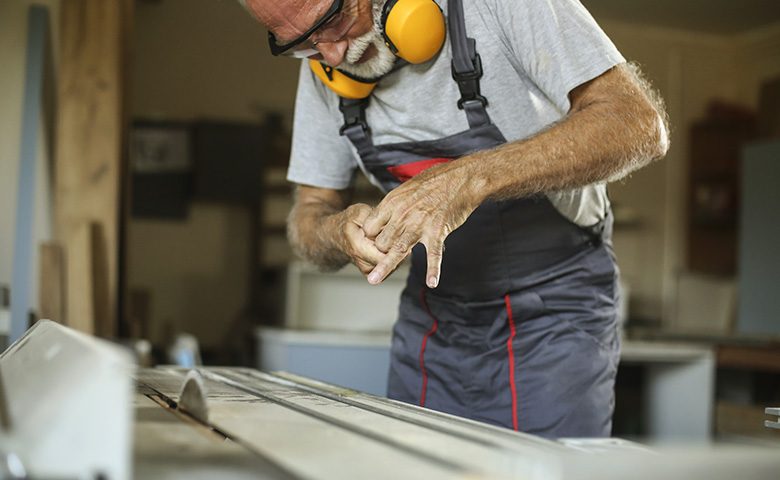Every single job requires workers to use their hands in some capacity. So it’s no surprise that injuries to the hands are the second-most common type of workplace injury. In fact, in 2019 hand injuries comprised over 13% of total injuries and illnesses that led to missed workdays in the private sector.
The risk of damage to workers’ hands is especially high in industries such as oil and gas, construction, mining, manufacturing, warehousing and transport where injuries to fingers and hands account for over 40% of incidents. To protect employees and keep workplaces safe, consider the following ways to reduce the risk of injuries to hands.
Invest in proper equipment and take care of it
This may be one of the most universal ways to improve the safety of your work area. Hand tools are a major source of injury and OSHA notes that the biggest threat that hand tools pose comes from the misuse of equipment and lack of maintenance. Unsafe tools are incidents waiting to happen and it’s the employer’s responsibility to ensure that tools and equipment being used on the job are in safe condition. This means developing a proper system for, and training workers on, using the right tool for the job, regularly maintaining equipment, and making sure that tools and equipment are examined for damage before being used.
In many cases, providing PPE to workers is mandatory, but investing in high-quality safety equipment can drastically reduce workplace injuries. Identify the appropriate PPE, taking care to outfit staff with gloves and other protections best suited for the job at hand. For example, electricians require insulated gloves that allow for fine motor control, while staff handling heavy equipment may require bulkier gloves that provide more shock absorption.
Comfort is a key consideration as well, as employees will be far less likely to wear gloves if they feel they are uncomfortable or restrict their hand movements to the detriment of their abilities. Work with employees to find PPE that protects them from hazards but does not hinder their comfort or skills on the job. According to OSHA, 71% of hand and arm injuries could have been avoided with the proper protective equipment. Yet, 70% of workers don’t wear hand protection and when they do 30% do not wear the right kind for the job. This is among the reasons why a new industrial-glove standard has recently been established. Keep your company up to date on all industry standards and equipment requirements in order to best protect employees.
Ensure work areas are kept safe
One route to fewer hand-related incidents is to reduce issues that can cause workers to take their eyes or mind off the task at hand, especially when they’re handling potentially dangerous tools and equipment. In particular, consider how you can:
- eliminate distractions; keep other workers who aren’t involved in the task at hand a safe distance from the work area when dangerous tools or equipment are being used, and reduce as many visual and auditory distractions as possible.
- ensure that workspaces are well lit when operating electric tools like power saws.
- train workers to avoid heat, oil, and sharp edges when operating and storing tools.
- keep spaces clean and organized; developing and implementing good housekeeping habits among staff will help immensely in keeping hands safe
Training. Training. Training.
Quality training programs are one of the best ways to ensure the safety of your workers’ hands. Training sessions with staff should focus on the following areas:
- Recognizing hazards. Staff should be trained on how to spot common hazards, as well as those specific to different types of tools, and what to do if they encounter a new hazard in the workplace.
- Proper use and handling of tools and equipment. Knowing when to use which tool and how to operate it according to the manufacturer’s instructions is key to avoiding injury.
- Keep neighbors safe. When using sharp tools, they should always be directed away from aisles or areas where other employees are close.
- Human factors training. Workers should be taught to deal with the human factors that can dramatically increase their risk of a hand injury, especially when they’re tired, frustrated, complacent or in a rush.
Toolbox talks are a great way to reinforce this training, to fight against complacency, and to reinforce key safety messaging and the benefits of PPE. Because hand injuries are so prevalent, it’s a good idea to make them a regular topic for toolbox talks.
Healthy, able hands are every worker’s meal ticket and need to be protected as such. Reduced incidents regarding hands also mean lower insurance premiums and fewer lost-time injuries. Investing in proper equipment, good housekeeping habits, and health and safety training is a smart way to cut down on the likelihood of employees hurting their hands in the workplace.

